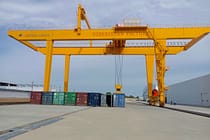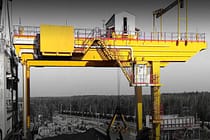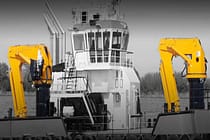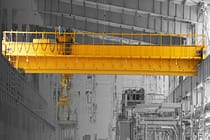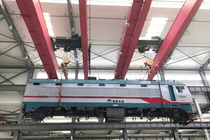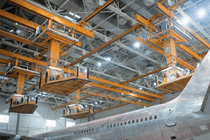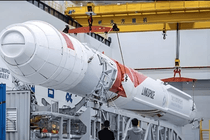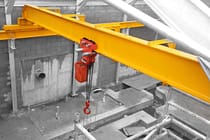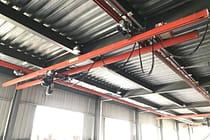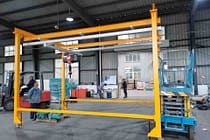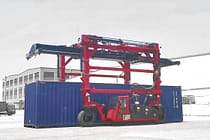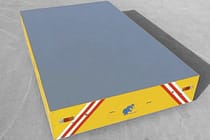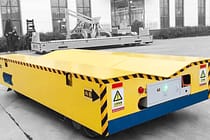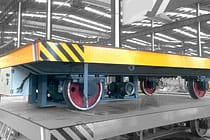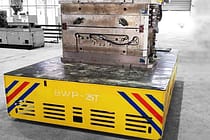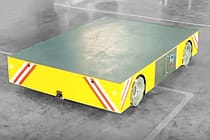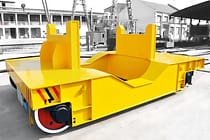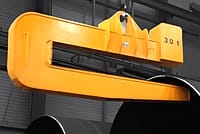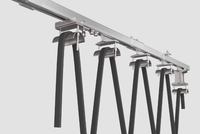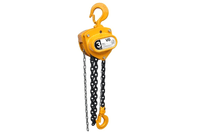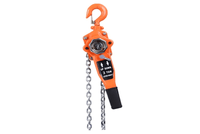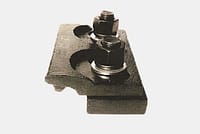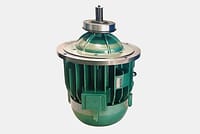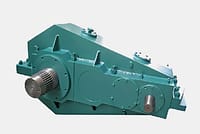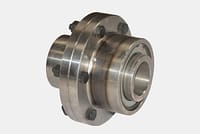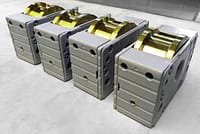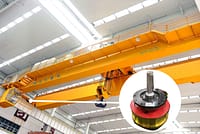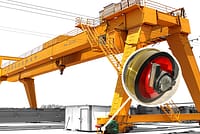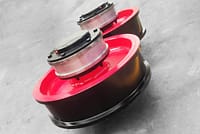Jak zainstalować suwnicę jednodźwigarową?
Instalacja suwnicy jednodźwigarowej może wydawać się trudnym zadaniem, ale przy odpowiednich narzędziach, wiedzy i przygotowaniu może to być stosunkowo prosty proces. W tym artykule przedstawimy przewodnik krok po kroku, jak zainstalować suwnicę jednodźwigarową.
Co to jest suwnica jednodźwigarowa?
Suwnica jednodźwigarowa to rodzaj suwnicy z jednym dźwigarem biegnącym wzdłuż suwnicy. Dźwigar jest przymocowany do wózka końcowego po obu stronach, który przesuwa dźwig wzdłuż belki jezdnej. Suwnica jednodźwigarowa jest idealnym rozwiązaniem do lekkich zastosowań i nadaje się do obciążeń w zakresie od 250 funtów do 15 ton.
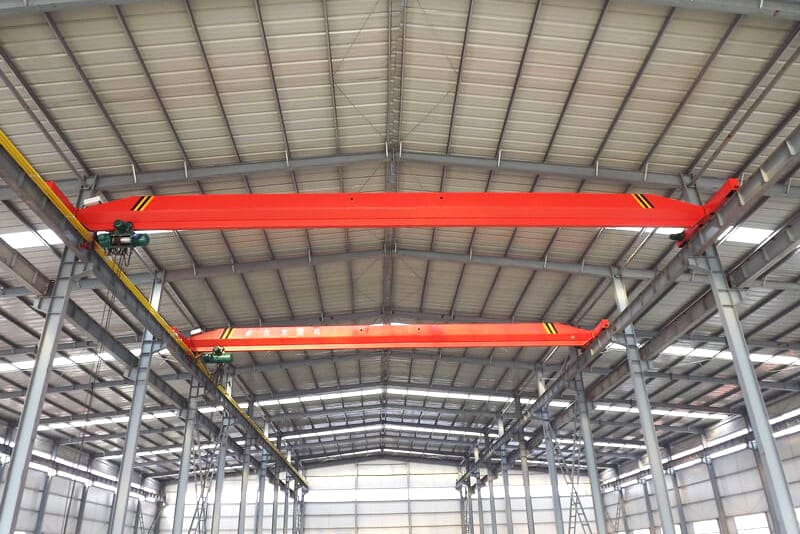
Znaczenie prawidłowej instalacji
Prawidłowa instalacja suwnicy jednodźwigarowej jest niezbędna, aby zapewnić bezpieczeństwo i wydajność w miejscu pracy. Nieprawidłowa instalacja może prowadzić do wypadków, uszkodzeń sprzętu i obniżonej produktywności. Dlatego też niezwykle ważne jest przestrzeganie wytycznych producenta dotyczących instalacji i procedur bezpieczeństwa podczas procesu instalacji.
Przygotowanie przed instalacją
Przed rozpoczęciem procesu instalacji ważne jest przeprowadzenie przeglądu miejsca w celu oceny obszaru, w którym zostanie zainstalowany dźwig. Przegląd ten powinien obejmować pomiar wymiarów przestrzeni i identyfikację potencjalnych przeszkód lub zagrożeń. Ponadto kluczowe jest określenie nośności i wymagań dźwigu, takich jak maksymalny udźwig, wysokość podnoszenia i prędkość robocza.
Uzyskanie niezbędnych pozwoleń i zgód to kolejny ważny krok w procesie przedinstalacyjnym. Wiąże się to z uzyskaniem niezbędnych pozwoleń od władz lokalnych oraz zapewnieniem zgodności z przepisami budowlanymi i przepisami bezpieczeństwa.
Przygotowanie miejsca instalacji obejmuje upewnienie się, że jest ono wolne od gruzu, przeszkód i zagrożeń. Teren powinien być równy, a podłoga powinna mieć wystarczającą nośność, aby utrzymać dźwig i przenoszone przez niego obciążenia.
Przegląd procesu instalacji suwnicy jednodźwigarowej
Instalacja suwnicy to złożony proces, który wymaga starannego planowania i wykonania. Powodzenie instalacji w dużej mierze zależy od dokładności procesu instalacji, zwłaszcza w przypadku montażu konstrukcji nośnej i elementów dźwigu.
Proces instalacji suwnicy jednodźwigarowej obejmuje kilka kroków, które należy wykonać, aby zapewnić bezpieczną i wydajną instalację. Poniżej znajduje się przegląd procesu instalacji:
Instalowanie konstrukcji wsporczej
Przed zainstalowaniem konstrukcji nośnej należy przeprowadzić badanie terenu w celu określenia przydatności miejsca do instalacji dźwigu. Badanie powinno zidentyfikować wszelkie potencjalne zagrożenia lub przeszkody, które mogą mieć wpływ na proces instalacji lub działanie żurawia. Gdy witryna zostanie uznana za odpowiednią, należy podjąć następujące kroki:
1. Budowa słupów lub belek nośnych
Kolumny lub belki podporowe powinny być zbudowane zgodnie ze specyfikacjami producenta dźwigu. Kolumny lub belki powinny być solidnie zakotwiczone w fundamencie, a beton powinien być pozostawiony do utwardzenia przez określony czas.
2. Montaż belek jezdnych
Belki pasa startowego powinny być instalowane na szczycie kolumn lub belek podporowych i powinny być wypoziomowane i równoległe do siebie. Belki pasa startowego powinny być solidnie przymocowane do konstrukcji podporowej za pomocą śrub lub spawania, w zależności od specyfikacji producenta.
3. Montaż wózków końcowych
Wózki końcowe to koła na końcu mostu podsuwnicowego, które poruszają się wzdłuż belek pasa startowego. Wózki końcowe należy zamontować na moście i ustawić tak, aby płynnie poruszały się po belkach jezdnych. Wózki końcowe powinny być bezpiecznie przymocowane do mostu i wyrównane ze środkiem mostu.

4. Zabezpieczenie konstrukcji nośnej do budynku
Konstrukcja nośna powinna być solidnie przymocowana do budynku, aby zapobiec jakimkolwiek ruchom podczas pracy dźwigu. Metoda mocowania będzie zależeć od konstrukcji budynku i specyfikacji producenta dźwigu.
Instalowanie komponentów żurawia
Po zainstalowaniu konstrukcji nośnej można zmontować i zainstalować elementy żurawia. Elementy dźwigu obejmują wciągnik, wózek, most i elementy elektryczne. Należy podjąć następujące kroki:
5. Montaż wciągnika
Wciągnik to element, który podnosi i opuszcza ładunek. Wciągnik powinien być montowany zgodnie ze specyfikacjami producenta, a przed instalacją należy sprawdzić ustawienia hamulca i wyłącznika krańcowego.

6. Montaż wózka na pomoście
Wózek jest elementem, który przesuwa wciągnik poziomo wzdłuż mostu. Wózek należy zamontować na moście i wyrównać z wózkami końcowymi. Należy sprawdzić wyrównanie, aby zapewnić płynny ruch wzdłuż belek jezdnych.
7. Połączenie mostu z belkami jezdnymi
Most to element, który rozciąga się na odległość między konstrukcją nośną a końcowymi wózkami. Most powinien być połączony z belkami pasa startowego za pomocą śrub lub spawania, w zależności od specyfikacji producenta. Należy sprawdzić wyrównanie mostu, aby upewnić się, że jest on równoległy do belek pasa startowego.
8. Instalowanie komponentów elektrycznych
Komponenty elektryczne obejmują zasilanie, silnik i sterowanie. Komponenty elektryczne powinny być instalowane zgodnie ze specyfikacjami producenta, a okablowanie powinno być sprawdzane pod kątem prawidłowych połączeń i izolacji.
Testowanie i uruchomienie
Po zainstalowaniu elementów żurawia, żuraw powinien przejść testy obciążeniowe i kontrole systemowe, aby upewnić się, że działa bezpiecznie i wydajnie. Należy podjąć następujące kroki:
9. Przeprowadzanie testów obciążeniowych i kontroli systemu
Należy przeprowadzić testy obciążeniowe, aby upewnić się, że żuraw może podnieść określony udźwig bez żadnych problemów. Należy przeprowadzić kontrole systemu, aby upewnić się, że wszystkie komponenty działają prawidłowo i nie występują żadne zagrożenia bezpieczeństwa.
10. Dokładne dostrojenie ruchów i sterowania dźwigiem
Ruchy i sterowanie dźwigiem powinny być precyzyjnie dostrojone, aby zapewnić ich płynność i responsywność. Operator dźwigu powinien zostać przeszkolony w zakresie prawidłowego korzystania ze sterowania i procedur bezpieczeństwa.
Prawidłowa instalacja suwnicy jednodźwigarowej jest niezbędna, aby zapewnić bezpieczeństwo, wydajność i produktywność w miejscu pracy. Ważne jest, aby przestrzegać wytycznych producenta dotyczących instalacji i procedur bezpieczeństwa podczas procesu instalacji. Dzięki zrozumieniu przeglądu procesu instalacji możesz zapewnić pomyślną instalację swojej suwnicy jednodźwigarowej.
Wyślij zapytanie
- E-mail: sprzedaż@hndfcrane.com
- WhatsApp: +86 191 3738 6654
- Telegram: +86 191 3738 6654
- Tel: +86-373-581 8299
- Faks: +86-373-215 7000
- Dodaj: dzielnica przemysłowa Changnao, miasto Xinxiang, prowincja Henan, Chiny
 WeChat
WeChat








